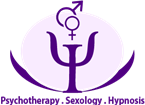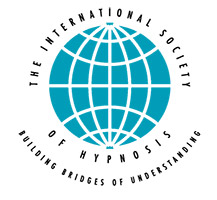
Incoherence Pulse, Heart Beat
Biofeedback
Biofeedback is the process of becoming aware of various physiological functions using instruments that provide information on the activity of those same systems, with a goal of being able to manipulate them at will. Processes that can be controlled include brainwaves, muscle tone, skin conductance, heart rate and pain perception.
Biofeedback may be used to improve health or performance, and the physiological changes often occur in conjunction with changes to thoughts, emotions, and behavior. Eventually, these changes can be maintained without the use of extra equipment.
Biofeedback has been found to be effective for the treatment of headaches and migraines.
Biofeedback is a process that enables an individual to learn how to change physiological activity for the purposes of improving health and performance. Precise instruments measure physiological activity such as brainwaves, heart function, breathing, muscle activity, and skin temperature. These instruments rapidly and accurately 'feed back' information to the user. The presentation of this information — often in conjunction with changes in thinking, emotions, and behavior — supports desired physiological changes. Over time, these changes can endure without continued use of an instrument.
Sensor modalities ; Table of Major Biofeedback Modalities
Electromyograph
An electromyograph (EMG) uses surface electrodes to detect muscle action potentials from underlying skeletal muscles that initiate muscle contraction. Clinicians record the surface electromyogram (SEMG) using one or more active electrodes that are placed over a target muscle and a reference electrode that is placed within six inches of either active. The SEMG is measured in microvolts (millionths of a volt).
Biofeedback therapists use EMG biofeedback when treating anxiety and worry, chronic pain, computer-related disorder, essential hypertension, headache (migraine, mixed headache, and tension-type headache), low back pain, physical rehabilitation (cerebral palsy, incomplete spinal cord lesions, and stroke), temporomandibular joint disorder (TMD), torticollis, and fecal incontinence, urinary incontinence, and pelvic pain.
Feedback thermometer
A feedback thermometer detects skin temperature with a thermistor (a temperature-sensitive resistor) that is usually attached to a finger or toe and measured in degrees Celsius or Fahrenheit. Skin temperature mainly reflects arteriole diameter. Hand-warming and hand-cooling are produced by separate mechanisms, and their regulation involves different skills. Hand-warming involves arteriole vasodilation produced by a beta-2 adrenegeric hormonal mechanism. Hand-cooling involves arteriole vasoconstriction produced by the increased firing of sympathetic C-fibers.
Biofeedback therapists use temperature biofeedback when treating chronic pain, edema, headache (migraine and tension-type headache), essential hypertension, Raynaud’s disease, anxiety, and stress.
Electrodermograph
An electrodermograph (EDG) measures skin electrical activity directly (skin conductance and skin potential) and indirectly (skin resistance) using electrodes placed over the digits or hand and wrist. Orienting responses to unexpected stimuli, arousal and worry, and cognitive activity can increase eccrine sweat gland activity, increasing the conductivity of the skin for electrical current.
In skin conductance, an electrodermograph imposes an imperceptible current across the skin and measures how easily it travels through the skin. When anxiety raises the level of sweat in a sweat duct, conductance increases. Skin conductance is measured in microsiemens (millionths of a siemens). In skin potential, a therapist places an active electrode over an active site (e.g., the palmar surface of the hand) and a reference electrode over a relatively inactive site (e.g., forearm). Skin potential is the voltage that develops between eccrine sweat glands and internal tissues and is measured in millivolts (thousandths of a volt). In skin resistance, also called galvanic skin response (GSR), an electrodermograph imposes a current across the skin and measures the amount of opposition it encounters. Skin resistance is measured in kΩ (thousands of ohms).
Biofeedback therapists use electrodermal biofeedback when treating anxiety disorders, hyperhidrosis (excessive sweating), and stress. Electrodermal biofeedback is used as an adjunct to psychotherapy to increase client awareness of their emotions. In addition, electrodermal measures have long served as one of the central tools in polygraphy (lie detection) because they reflect changes in anxiety or emotional activation.
Electroencephalograph
An electroencephalograph (EEG) measures the electrical activation of the brain from scalp sites located over the human cortex. The EEG shows the amplitude of electrical activity at each cortical site, the amplitude and relative power of various wave forms at each site, and the degree to which each cortical site fires in conjunction with other cortical sites (coherence and symmetry).
The EEG uses precious metal electrodes to detect a voltage between at least two electrodes located on the scalp. The EEG records both excitatory postsynaptic potentials (EPSPs) and inhibitory postsynaptic potentials (IPSPs) that largely occur in dendrites in pyramidal cells located in macrocolumns, several millimeters in diameter, in the upper cortical layers. Neurofeedback monitors both slow and fast cortical potentials.
Slow cortical potentials are gradual changes in the membrane potentials of cortical dendrites that last from 300 ms to several seconds. These potentials include the contingent negative variation (CNV), readiness potential, movement-related potentials (MRPs), and P300 and N400 potentials.
Fast cortical potentials range from 0.5 Hz to 100 Hz. The main frequency ranges include delta, theta, alpha, the sensorimotor rhythm, low beta, high beta, and gamma. The specific cutting points defining the frequency ranges vary considerably among professionals. Fast cortical potentials can be described by their predominant frequencies, but also by whether they are synchronous or asynchronous wave forms. Synchronous wave forms occur at regular periodic intervals, whereas asynchronous wave forms are irregular.
The synchronous delta rhythm ranges from 0.5 to 3.5 Hz. Delta is the dominant frequency from ages 1 to 2, and is associated in adults with deep sleep and brain pathology like trauma and tumors, and learning disability.
The synchronous theta rhythm ranges from 4 to 7 Hz. Theta is the dominant frequency in healthy young children and is associated with drowsiness or starting to sleep, REM sleep, hypnagogic imagery (intense imagery experienced before the onset of sleep), hypnosis, attention, and processing of cognitive and perceptual information.
The synchronous alpha rhythm ranges from 8 to 13 Hz and is defined by its waveform and not by its frequency. Alpha activity can be observed in about 75% of awake, relaxed individuals and is replaced by low-amplitude desynchronized beta activity during movement, complex problem-solving, and visual focusing. This phenomenon is called alpha blocking.
The synchronous sensorimotor rhythm (SMR) ranges from 12 to 15 Hz and is located over the sensorimotor cortex (central sulcus). The sensorimotor rhythm is associated with the inhibition of movement and reduced muscle tone.
The beta rhythm consists of asynchronous waves and can be divided into low beta and high beta ranges (13–21 Hz and 20–32 Hz). Low beta is associated with activation and focused thinking. High beta is associated with anxiety, hypervigilance, panic, peak performance, and worry.
EEG activity from 36 to 44 Hz is also referred to as gamma. Gamma activity is associated with perception of meaning and meditative awareness.
Neurotherapists use EEG biofeedback when treating addiction, attention deficit hyperactivity disorder (ADHD), learning disability, anxiety disorders (including worry, obsessive-compulsive disorder and posttraumatic stress disorder), depression, migraine, and generalized seizures.
Photoplethysmograph
A photoplethysmograph (PPG) measures the relative blood flow through a digit using a photoplethysmographic (PPG) sensor attached by a Velcro band to the fingers or to the temple to monitor the temporal artery. An infrared light source is transmitted through or reflected off the tissue, detected by a phototransistor, and quantified in arbitrary units. Less light is absorbed when blood flow is greater, increasing the intensity of light reaching the sensor.
A photoplethysmograph can measure blood volume pulse (BVP), which is the phasic change in blood volume with each heartbeat, heart rate, and heart rate variability (HRV), which consists of beat-to-beat differences in intervals between successive heartbeats.
A photoplethysmograph can provide useful feedback when temperature feedback shows minimal change. This is because the PPG sensor is more sensitive than a thermistor to minute blood flow changes. Biofeedback therapists can use a photoplethysmograph to supplement temperature biofeedback when treating chronic pain, edema, headache (migraine and tension-type headache), essential hypertension, Raynaud’s disease, anxiety, and stress.
Electrocardiograph
The electrocardiograph (ECG) uses electrodes placed on the torso, wrists, or legs, to measure the electrical activity of the heart and measures the interbeat interval (distances between successive R-wave peaks in the QRS complex). The interbeat interval, divided into 60 seconds, determines the heart rate at that moment. The statistical variability of that interbeat interval is what we call heart rate variability. The ECG method is more accurate than the PPG method in measuring heart rate variability.
Biofeedback therapists use HRV biofeedback when treating asthma, COPD, depression, fibromyalgia, heart disease, and unexplained abdominal pain.
Pneumograph
A pneumograph or respiratory strain gauge uses a flexible sensor band that is placed around the chest, abdomen, or both. The strain gauge method can provide feedback about the relative expansion/contraction of the chest and abdomen, and can measure respiration rate (the number of breaths per minute). Clinicians can use a pneumograph to detect and correct dysfunctional breathing patterns and behaviors. Dysfunctional breathing patterns include clavicular breathing (breathing that primarily relies on the external intercostals and the accessory muscles of respiration to inflate the lungs), reverse breathing (breathing where the abdomen expands during exhalation and contracts during inhalation), and thoracic breathing (shallow breathing that primarily relies on the external intercostals to inflate the lungs). Dysfunctional breathing behaviors include apnea (suspension of breathing), gasping, sighing, and wheezing.
A pneumograph is often used in conjunction with an electrocardiograph (ECG) or photoplethysmograph (PPG) in heart rate variability (HRV) training.
Biofeedback therapists use pneumograph biofeedback with patients diagnosed with anxiety disorders, asthma, chronic pulmonary obstructive disorder (COPD), essential hypertension, panic attacks, and stress.
Capnometer
A capnometer or capnograph uses an infrared detector to measure end-tidal CO2 (the partial pressure of carbon dioxide in expired air at the end of expiration) exhaled through the nostril into a latex tube. The average value of end-tidal CO2 for a resting adult is 5% (36 Torr or 4.8 kPa). A capnometer is a sensitive index of the quality of patient breathing. Shallow, rapid, and effortful breathing lowers CO2, while deep, slow, effortless breathing increases it.
Biofeedback therapists use capnometric biofeedback to supplement respiratory strain gauge biofeedback with patients diagnosed with anxiety disorders, asthma, chronic pulmonary obstructive disorder (COPD), essential hypertension, panic attacks, and stress.
Rheoencephalograph
Rheoencephalography (REG), or brain blood flow biofeedback, is a biofeedback technique of a conscious control of blood flow. An electronic device called a rheoencephalograph [from Greek rheos stream, anything flowing, from rhein to flow] is utilized in brain blood flow biofeedback. Electrodes are attached to the skin at certain points on the head and permit the device to measure continuously the electrical conductivity of the tissues of structures located between the electrodes. The brain blood flow technique is based on non-invasive method of measuring bio-impedance. Changes in bio-impedance are generated by blood volume and blood flow and registered by a rheographic device. The pulsative bio-impedance changes directly reflect the total blood flow of the deep structures of brain due to high frequency impedance measurements.
Hemoencephalography
Hemoencephalography or HEG biofeedback is a functional infrared imaging technique. As its name describes, it measures the differences in the color of light reflected back through the scalp based on the relative amount of oxygenated and unoxygenated blood in the brain. Research continues to determine its reliability, validity, and clinical applicability. HEG is used to treat ADHD and migraine, and for research.
Applications
Incontinence
Mowrer detailed the use of a bedwetting alarm that sounds when children urinate while asleep. This simple biofeedback device can quickly teach children to wake up when their bladders are full and to contract the urinary sphincter and relax the detrusor muscle, preventing further urine release. Through classical conditioning, sensory feedback from a full bladder replaces the alarm and allows children to continue sleeping without urinating.
Kegel developed the perineometer in 1947 to treat urinary incontinence (urine leakage) in women whose pelvic floor muscles are weakened during pregnancy and childbirth. The perineometer, which is inserted into the vagina to monitor pelvic floor muscle contraction, satisfies all the requirements of a biofeedback device and enhances the effectiveness of popular Kegel exercises.
Research has shown that biofeedback can improve the efficacy of pelvic floor exercises and help restore proper bladder functions. The mode of action of vaginal cones, for instance involves a biological biofeedback mechanism . Studies have shown that biofeedback obtained with vaginal cones is as effective as biofeedback induced through physiotherapy electrostimulation.
In 1992, the United States Agency for Health Care Policy and Research recommended biofeedback as a first-line treatment for adult urinary incontinence.
Pain.
Biofeedback could reduce frontalis muscle (forehead) contraction. Analog (proportional) and binary (ON or OFF) visual EMG biofeedback are equally helpful in lowering masseter SEMG levels.
Clinical effectiveness
"From the beginning biofeedback developed as a research-based approach emerging directly from laboratory research on psychophysiology and behavior therapy, The ties of biofeedback/neurofeedback to the biomedical paradigm and to research are stronger than is the case for many other behavioral interventions”
Attention deficit disorder, facial pain and temporomandibular disorder, hypertension, urinary incontinence, Raynaud's phenomenon, substance abuse, and headache.
The 2008 edition reviewed the efficacy of biofeedback for over 40 clinical disorders, ranging from alcoholism/substance abuse to vulvar vestibulitis. The ratings for each disorder depend on the nature of research studies available on each disorder, ranging from anecdotal reports to double blind studies with a control group. Thus, a lower rating may reflect the lack of research rather than the ineffectiveness of biofeedback for the problem.
Efficacy
Listed for the five levels of efficacy from weakest to strongest, these levels include: not empirically supported, possibly efficacious, probably efficacious, efficacious, and efficacious and specific.
Level 1: Not empirically supported. This designation includes applications supported by anecdotal reports and/or case studies in non-peer reviewed venues. Eating disorders, immune function, spinal cord injury, and syncope to this category.
Level 2: Possibly efficacious. This designation requires at least one study of sufficient statistical power with well identified outcome measures but lacking randomized assignment to a control condition internal to the study. Asthma, autism, Bell palsy, cerebral palsy, COPD, coronary artery disease, cystic fibrosis, depression, erectile dysfunction, fibromyalgia, hand dystonia, irritable bowel syndrome, PTSD, repetitive strain injury, respiratory failure, stroke, and urinary incontinence in children to this category.
Level 3: Probably efficacious. This designation requires multiple observational studies, clinical studies, wait list controlled studies, and within subject and intrasubject replication studies that demonstrate efficacy. Alcoholism and substance abuse, arthritis, diabetes mellitus, fecal disorders in children, fecal incontinence in adults, insomnia, pediatric headache, traumatic brain injury, urinary incontinence in males, and vulvar vestibulitis (vulvodynia) to this category.
Level 4: Efficacious. This designation requires the satisfaction of six criteria:
(a) In a comparison with a no-treatment control group, alternative treatment group, or sham (placebo) control using randomized assignment, the investigational treatment is shown to be statistically significantly superior to the control condition or the investigational treatment is equivalent to a treatment of established efficacy in a study with sufficient power to detect moderate differences.
(b) The studies have been conducted with a population treated for a specific problem, for whom inclusion criteria are delineated in a reliable, operationally defined manner.
(c) The study used valid and clearly specified outcome measures related to the problem being treated.
(d) The data are subjected to appropriate data analysis.
(e) The diagnostic and treatment variables and procedures are clearly defined in a manner that permits replication of the study by independent researchers.
(f) The superiority or equivalence of the investigational treatment has been shown in at least two independent research settings.
Anxiety, chronic pain, epilepsy, constipation (adult), headache (adult), hypertension, motion sickness, Raynaud's disease, and temporomandibular disorder to this category.
Level 5: Efficacious and specific. The investigational treatment must be shown to be statistically superior to credible sham therapy, pill, or alternative bona fide treatment in at least two independent research settings. Urinary incontinence (females) to this category.
Pelvic muscle dysfunction
Pelvic Muscle Dysfunction Biofeedback (PMDB) encompasses "elimination disorders and chronic pelvic pain syndromes.
The Pelvic Muscle Dysfunction Biofeedback areas include:
- Applied Psychophysiology and Biofeedback,
- Pelvic Floor Anatomy, Assessment, and Clinical Procedures,
- Clinical Disorders: Bladder Dysfunction,
- Clinical Disorders: Bowel Dysfunction,
- Chronic Pelvic Pain Syndromes.








